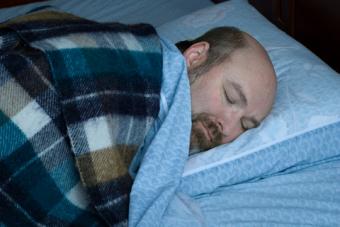
The Epworth Sleepiness Scale is a self-administered questionnaire used to measure daytime sleepiness and to assist in diagnosing sleep disorders. Introduced in 1991 by Dr. Murray Johns in Australia, the scale provides a diagnostically relevant score based on the answers to eight questions. It is widely used around the world by doctors, sleep professionals, and mental health professionals.
What is the Epworth Sleepiness Scale?
The scale is a subjective measurement of sleepiness as well as a measurement of how it affects daily life. A score higher than 10 receives an overall rating of sleepy, while a score of 18 or more is considered very sleepy.
If your score is greater than 10, you should evaluate your sleep habits, increase the amount of sleep you get each night, or see a sleep specialist to rule out possible causes of sleep deprivation.
The activities scored on the Epworth Sleepiness Scale include those situations frequently encountered by the average person, such as watching television or speaking with a friend. The entire test takes less than five minutes to complete.
Advantages Over Other Sleep Tests
The Epworth scale has several advantages over tests that measure sleepiness or fatigue. When taken at regular intervals over time, it is a very accurate and useful tool in diagnosing sleep disorders.
The scale is:
- Inexpensive to use
- Can be administered to a single person or to a large group
- Although subjective, it is a reliable indicator of daytime sleepiness
- Distinguishes between sleepiness and tiredness
- Simple questions and scoring method based on everyday situations
Using the Scale
The questions on the Epworth Sleepiness Scale measure how much sleep affects daily life. By answering the questions honestly, you can calculate your level of daytime sleepiness. Answer the questions based on how likely you are to fall asleep during each activity, and not on how tired or sleepy the activity makes you feel.Give a score from 0 to 3 to each item on the scale, with 0 representing no possibility of falling sleep, and 3 meaning your likelihood of falling asleep during the activity is very high.
Scores:
- 0 = Would never fall asleep
- 1 = Slight chance of falling asleep
- 2 = Moderate chance of falling asleep
- 3 = High chance of falling asleep
| Activity | Score |
| Sitting quietly and reading | __________ |
| Watching television | __________ |
| Sitting quietly in a public location | __________ |
| Riding in a car for an hour nonstop | __________ |
| Lying down for a rest in the afternoon | __________ |
| Sitting and speaking with a friend | __________ |
| Sitting quietly after lunch, no alcohol | __________ |
| Stopped in traffic in a car | __________ |
Applications
Total scores can assist in the diagnosis of sleep disorders and offer clues into the cause of excessive daytime sleepiness in the average adult. Scores between 0 and 9 are average scores found in the population. Typically, scores in this range do not cause a loss of function or other symptoms. Scores between 10 and 24 may indicate the presence of a sleep disorder that requires additional evaluation and treatment by a sleep specialist.
Anyone suffering from a sleep disorder, such as obstructive sleep apnea, snoring, narcolepsy, insomnia, hypersomnia, or periodic limb movement disorder will usually receive a considerably higher total score than someone without a sleep disorder. Based on the scores given to specific questions, and the overall level of sleepiness, your doctor can order additional testing to rule out, or diagnose, various sleep problems.
Other Useful Sleep Tools
The scale does not provide a definitive diagnosis of a sleep disorder. However, when used in conjunction with other tools, the scale can alert you to unhealthy sleep patterns and offers useful information that your doctor can use when making a diagnosis.
- Sleep Diaries allow you to chart your daily sleep patterns to look for areas of concern that may be interfering with sleep. Keeping a sleep diary for a minimum of two weeks is often the best way of identifying lifestyle causes of your sleepiness.
- Sleep Evaluation Questionnaires involve answering a series of questions in True/False format. These tests help identify problems with sleep patterns, while highlighting areas of your life that are negatively affected by sleeping difficulties.
- Sleep studies require the use of monitoring devices at home or a stay in a sleep lab to uncover problems that occur while you are asleep. A sleep study is useful in the diagnosis of night terrors, movement disorders, and obstructive sleep apnea.
Sleep disorders prevent you from obtaining the necessary amount of sleep needed by your mind and body for optimum functioning. Even when a sleep disorder is not responsible for your daytime sleepiness, a sleep evaluation can assist in determining the reasons you wake feeling un-refreshed and tired. If you have trouble falling asleep, staying asleep, or if you wake too early, or if you still feel sleepy after a full night of sleep, speak with your doctor about undergoing a complete evaluation.Excessive daytime sleepiness is may be the result of an underlying medical condition. Diagnosis and treatment of underlying disorders, as well as changes in lifestyle or sleep hygiene, are usually required to reduce or eliminate daytime sleepiness.







